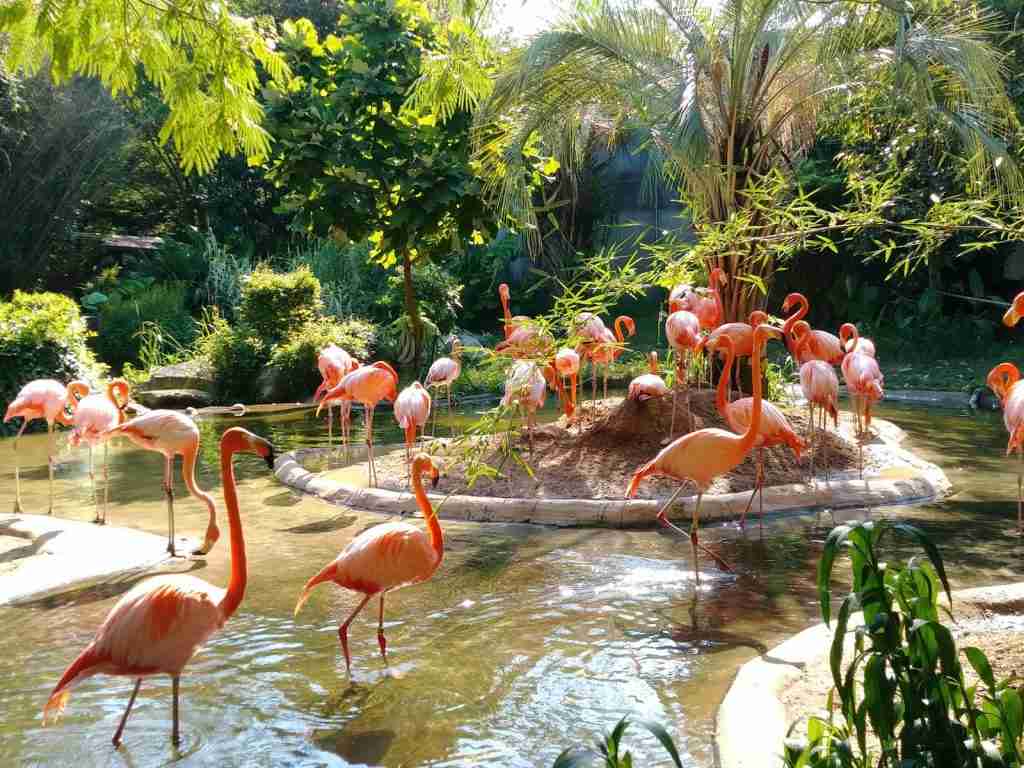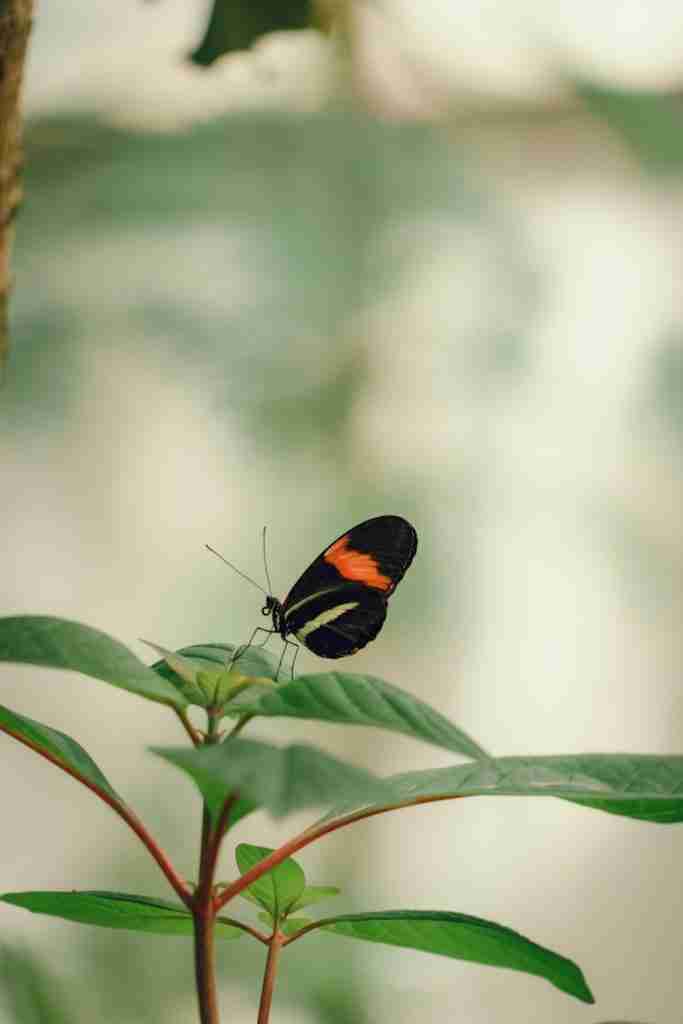25 Fun Facts About Life You Need to Know
1. The average human dream lasts only 2 to 3 seconds.
Despite feeling like they last much longer, our dreams are incredibly brief. This reminds us of the complexity and speed of our subconscious mind.
Interestingly, throughout a full night’s sleep, you might cycle through multiple dreams, adding up to about two hours of dreaming. Each dream, however, flashes by in mere moments, making every night a rapid-fire showreel of the subconscious.
2. The Amazon Rainforest produces 20% of the world’s oxygen.
Often referred to as the “lungs of the Earth,” the Amazon plays a critical role in the global ecosystem. This underscores the importance of preserving our planet’s biodiversity and natural habitats.
The vast expanses of trees and plant life in the Amazon convert carbon dioxide into oxygen, showcasing the crucial role that natural environments play in sustaining life on Earth. It’s a call to action to protect these vital resources.
3. Bananas are berries, but strawberries aren’t.
In a surprising twist of botanical classification, what we commonly think of in terms of fruit isn’t always accurate. This invites us to look closer at the everyday things we take for granted.
According to botanical definitions, a berry is a fruit produced from the ovary of a single flower with seeds embedded in the flesh. By this definition, bananas qualify, while strawberries, due to their unique structure, do not.
4. A group of flamingos is called a flamboyance.

Language has a delightful way of capturing the essence of what it describes, and the term for a group of flamingos is no exception. This not only enriches our vocabulary but also our appreciation for the natural world.
The vibrant pink color and the graceful, flamboyant display of flamingos when they gather in groups inspired this aptly poetic name. It’s a testament to the beauty and whimsy found in nature’s design.
5. What is life insurance?
Life insurance is a financial product that provides a sum of money to your designated beneficiaries upon your death, offering financial security and peace of mind.
It’s essential for protecting your family’s financial future and covering any outstanding debts and expenses.
6. The universe is thought to be about 13.8 billion years old.
Through observations of the cosmic microwave background radiation, scientists have estimated the age of the universe. This universe extends beyond our planet, reaching into the depths of space and time.
This vast expanse of time puts into perspective the brief moment that humanity has existed within the cosmos, encouraging us to ponder our place in the universe. It’s a humbling reminder of the grand scale of existence.
7. There are more stars in the universe than grains of sand on all the Earth’s beaches.
This fact stretches our minds to grasp the vastness of the cosmos. It’s a humbling reminder of our place in the universe and the infinite wonders that lie beyond our planet.
Estimates suggest that for every grain of sand on Earth, there could be ten stars out there. This staggering ratio underscores the boundless scale of the universe and the endless possibilities it holds.
8. Octopuses have three hearts.
The octopus is a creature of wonder, with a biology as complex and intriguing as its behavior. These kind of fun facts about life highlights the remarkable adaptability and uniqueness of marine life.
Two of the hearts are responsible for pumping blood to the gills, while the third heart circulates blood to the rest of the body. This cardiovascular system is a testament to the evolutionary marvels of the natural world.
9. Trees can communicate and share resources through the “Wood Wide Web.”
Trees in a forest are connected through a network of underground fungi, allowing them to communicate and share nutrients. This reveals the cooperative and interconnected nature of ecosystems.
This symbiotic relationship, often referred to as the “Wood Wide Web,” highlights the complexity and resilience of natural communities, underscoring the importance of biodiversity and conservation efforts.
10. Cows have best friends.
Research has shown that cows form close bonds with others in their herd, often choosing to spend much of their time with a specific cow friend.
This sheds light on the social structures and emotional lives of animals, reminding us of their capacity for friendship and connection.
Observations of cow behavior indicate that these relationships can have a significant impact on their stress levels and overall well-being, highlighting the importance of social bonds across species.
11. A single teaspoon of a neutron star would weigh about 6 billion tons.
Neutron stars, the remnants of supernova explosions, are among the densest objects in the universe. This puts into perspective the extreme conditions and forces at play in the cosmos.
Their incredible density means that even a small amount of neutron star material would weigh as much as a mountain, showcasing the diverse and extreme nature of the universe’s contents.
12. The Eiffel Tower can be 15 cm taller during the summer.

When the iron of the Eiffel Tower heats up, it expands, causing the tower to grow in height. This intriguing demonstrates the responsiveness of materials to temperature changes, a principle observed in many aspects of science and engineering.
Such thermal expansion is a vivid example of how even the most solid structures are not immune to the laws of physics, adapting and changing with the environment around them.
13. What is life science study?
Life science is the study of living organisms and their interactions with each other and their environments.
This broad field includes biology, ecology, genetics, and medicine, exploring everything from microscopic cells to complex ecosystems.
14. Water can boil and freeze at the same time.
This phenomenon, known as the triple point, occurs under specific conditions where the temperature and pressure are just right for all three phases of water (solid, liquid, and gas) to coexist in equilibrium.
It’s a fascinating insight into the peculiarities of physics and one of the most intriguing facts about life.
Scientists use this unique state to define the Kelvin temperature scale, demonstrating how extreme conditions can lead to extraordinary phenomena. This rare occurrence showcases the delicate balance of nature’s laws.
15. The human nose can remember 50,000 different scents.
Our sense of smell is more sophisticated than we often give it credit for, playing a crucial role in memory, emotion, and perception. This life fun fact reveals the incredible capabilities of the human body and its interaction with the world.
Each scent has the power to evoke memories and emotions, illustrating the profound impact of our senses on our experiences and interactions. The complexity of this sensory system is a marvel of human biology.
16. Butterflies taste with their feet.

Butterflies have taste receptors on their feet, allowing them to sample the flavors of the plants they land on. This highlights the diversity and adaptability of sensory systems in the animal kingdom.
This unique method of tasting is essential for their survival, helping them find food and the right plants on which to lay their eggs. It’s a beautiful example of how life evolves in complex and unexpected ways.
17. Lightning strikes the Earth 100 times every second.
This electrifying fact about life highlights the dynamic and powerful forces of nature that occur around us continuously. Lightning is a spectacular display of energy and a reminder of the Earth’s vibrant activity.
The frequency of these strikes contributes to the planet’s electrical and chemical processes, playing a crucial role in the Earth’s atmosphere and ecosystem. It’s a striking example of the natural phenomena that shape our world.
18. Cat has 32 muscles in each ear.
Cats are known for their agility and sensory capabilities, with their ears being a prime example of this. Each ear is capable of moving independently, thanks to the multitude of muscles. This showcases the complexity of nature’s designs.
This intricate muscular system allows cats to precisely locate sounds, giving them exceptional hunting abilities. It’s a testament to the evolutionary adaptation of species to their environments.
19. Humans share 50% of their DNA with bananas.
At a fundamental level, all life on Earth is connected, and this surprising fact highlights the genetic similarities we share with even the most unexpected organisms. It’s a fascinating perspective on the interconnectivity of life.
This shared genetic material underscores the common foundation of all living things, illustrating the unity of life amidst its diversity. It’s a powerful reminder of our relationship to the natural world.
20. Honey never spoils.

Archaeologists have found pots of honey in ancient Egyptian tombs that are over 3,000 years old and still perfectly edible. Life facts such as these highlight the extraordinary properties of natural products.
The secret to honey’s eternal shelf life lies in its low moisture content and high acidity, creating an environment that’s inhospitable to bacteria and microorganisms. This makes honey a fascinating study in natural preservation.
21. The heart of a shrimp is located in its head.
Among the many curiosities in the animal kingdom, the anatomical layout of the shrimp is particularly fascinating. This offers a glimpse into the diversity and adaptability of life forms.
Located above the shrimp’s stomach, the heart’s placement in the head is a marvel of evolutionary adaptation, showcasing the incredible variety in how life evolves to suit different environments.
22. The speed of a computer mouse is measured in “Mickeys.”
A Mickey is the unit used to measure the movement distance of a computer mouse, named after Mickey Mouse due to its small and precise movements.
The name merges technology with a touch of whimsy, reflecting the creativity found in human innovation.
This quirky unit of measurement highlights the attention to detail and the ingenuity involved in the design and functionality of everyday objects. It’s a nod to the playful side of technology.
23. Why is protecting life below water important?
Protecting life below water is crucial for maintaining biodiversity, ensuring sustainable seafood supplies, balancing ecosystems, and supporting global oxygen production.
Healthy oceans and waterways are vital for life on Earth, including human life.
24. A day on Venus is longer than a year on Venus.

Venus rotates on its axis very slowly, resulting in a day that lasts longer than its orbit around the Sun. Venus challenges our Earth-centric perceptions of time and space.
Specifically, a single day on Venus lasts 243 Earth days, while its year takes only 225 Earth days. Such peculiarities in planetary dynamics offer fascinating insights into the mechanics of our solar system.
25. An adult human body contains about 60,000 miles of blood vessels.
The circulatory system is a marvel of biological engineering, with its vast network of vessels transporting blood to every part of the body. This information invites us to appreciate the complexity and efficiency of our own bodies.
The total length of these vessels is enough to circle the Earth more than twice, illustrating the intricate and expansive nature of the human body’s internal systems. It’s a testament to the wonder of life’s design.
FAQs
Life quotes offer inspiration, wisdom, and insights into the human experience. They can motivate us, provoke thought, and provide comfort or guidance through life’s challenges, encapsulating the essence of life’s lessons in a few powerful words.
Life savers, including lifeguards, emergency responders, and safety devices, play a crucial role in preventing accidents and saving lives. They provide immediate assistance during emergencies, ensuring the safety and well-being of individuals in danger.
The life cycle of a butterfly includes four main stages: egg, larva (caterpillar), pupa (chrysalis), and adult butterfly. Each stage is distinct and showcases remarkable transformations, culminating in the emergence of a butterfly.
The possibility of life in space is a subject of ongoing research, focusing on planets and moons within our solar system and beyond. Scientists search for life by looking for water, suitable atmospheric conditions, and chemical signatures that might indicate the presence of life forms.
Life expectancy is influenced by a combination of genetic, environmental, and lifestyle factors. These include access to healthcare, diet, physical activity, smoking, alcohol use, and socio-economic status. Efforts to improve these factors can lead to increased life expectancy.







